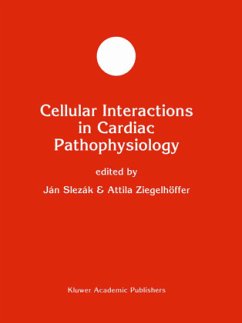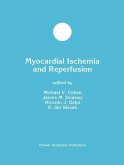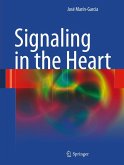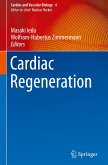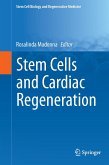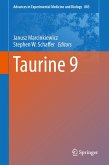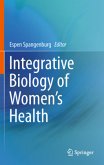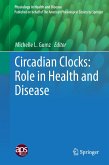Cellular Interactions in Cardiac Pathophysiology
Herausgegeben:Slezák, Ján; Ziegelhöffer, Attila
Cellular Interactions in Cardiac Pathophysiology
Herausgegeben:Slezák, Ján; Ziegelhöffer, Attila
- Broschiertes Buch
- Merkliste
- Auf die Merkliste
- Bewerten Bewerten
- Teilen
- Produkt teilen
- Produkterinnerung
- Produkterinnerung
Despite the considerable success in treating diseases of the heart and blood vessels, they still remain the major cause of mortality throughout the world. One of the reasons underlying this problem is our lack of understanding of the molecular and cellular aspects of the processes involved. These problems are fully discussed in Cellular Interactions in Cardiac Pathophysiology , which draws together 25 contributions from leading investigators from all parts of the world. The contributions are grouped under three headings: Extracellular matrix and cardiocyte interaction; Myocytic adaptations and myocardial injury; and Signal transduction. …mehr
Andere Kunden interessierten sich auch für
![Myocardial Ischemia and Reperfusion Myocardial Ischemia and Reperfusion]() Myocardial Ischemia and Reperfusion113,99 €
Myocardial Ischemia and Reperfusion113,99 €![Signaling in the Heart Signaling in the Heart]() José Marín-GarcíaSignaling in the Heart85,99 €
José Marín-GarcíaSignaling in the Heart85,99 €![Cardiac Regeneration Cardiac Regeneration]() Cardiac Regeneration113,99 €
Cardiac Regeneration113,99 €![Stem Cells and Cardiac Regeneration Stem Cells and Cardiac Regeneration]() Stem Cells and Cardiac Regeneration113,99 €
Stem Cells and Cardiac Regeneration113,99 €![Taurine 9 Taurine 9]() Taurine 9228,99 €
Taurine 9228,99 €![Integrative Biology of Women's Health Integrative Biology of Women's Health]() Integrative Biology of Women's Health113,99 €
Integrative Biology of Women's Health113,99 €![Circadian Clocks: Role in Health and Disease Circadian Clocks: Role in Health and Disease]() Circadian Clocks: Role in Health and Disease121,99 €
Circadian Clocks: Role in Health and Disease121,99 €-
-
-
Despite the considerable success in treating diseases of the heart and blood vessels, they still remain the major cause of mortality throughout the world. One of the reasons underlying this problem is our lack of understanding of the molecular and cellular aspects of the processes involved.
These problems are fully discussed in Cellular Interactions in Cardiac Pathophysiology, which draws together 25 contributions from leading investigators from all parts of the world. The contributions are grouped under three headings: Extracellular matrix and cardiocyte interaction; Myocytic adaptations and myocardial injury; and Signal transduction.
These problems are fully discussed in Cellular Interactions in Cardiac Pathophysiology, which draws together 25 contributions from leading investigators from all parts of the world. The contributions are grouped under three headings: Extracellular matrix and cardiocyte interaction; Myocytic adaptations and myocardial injury; and Signal transduction.
Produktdetails
- Produktdetails
- Developments in Molecular and Cellular Biochemistry 14
- Verlag: Springer / Springer US / Springer, Berlin
- Artikelnr. des Verlages: 978-1-4613-5828-2
- Softcover reprint of the original 1st ed. 1995
- Seitenzahl: 208
- Erscheinungstermin: 23. Oktober 2012
- Englisch
- Abmessung: 280mm x 210mm x 12mm
- Gewicht: 522g
- ISBN-13: 9781461358282
- ISBN-10: 1461358280
- Artikelnr.: 39915687
- Herstellerkennzeichnung
- Springer-Verlag GmbH
- Tiergartenstr. 17
- 69121 Heidelberg
- ProductSafety@springernature.com
- Developments in Molecular and Cellular Biochemistry 14
- Verlag: Springer / Springer US / Springer, Berlin
- Artikelnr. des Verlages: 978-1-4613-5828-2
- Softcover reprint of the original 1st ed. 1995
- Seitenzahl: 208
- Erscheinungstermin: 23. Oktober 2012
- Englisch
- Abmessung: 280mm x 210mm x 12mm
- Gewicht: 522g
- ISBN-13: 9781461358282
- ISBN-10: 1461358280
- Artikelnr.: 39915687
- Herstellerkennzeichnung
- Springer-Verlag GmbH
- Tiergartenstr. 17
- 69121 Heidelberg
- ProductSafety@springernature.com
I: Extracellular matrix and cardiocyte interaction.- Role of early reperfusion in the induction of adhesion molecules and cytokines in previously ischemic myocarium.- Importance of monocytes/macrophages and fibroblasts for healing of micronecroses in porcine myocardium.- Cell-cell and cell-matrix adhesion molecules in human heart and lung transplants.- Progression of heart failure: A role for interstitial fibrosis.- Chronic hibernating myocardium: Interstitial changes.- Differences between atrial and ventricular protein profiling in children with congenital heart disease.- Ventricular remodeling: insights from pharmacologic interventions with angiotensin-converting enzyme inhibitors.- Factors involved in capillary growth in the heart.- Biomechanical signals in the coronary artery triggering the metabolic processes during cardiac overload.- II: Myocytic adaptation and myocardial injury.- Oxidative stress and heart failure.- Structural and biochemical remodelling in catecholamine-induced cardiomyopathy: Comparative and ontogenetic aspects.- Angiotensin-converting enzyme inhibitors, left ventricular hypertrophy and fibrosis.- Influence of global ischemia on the sarcolemmal ATPases in the rat heart.- Response of the rat heart to catecholamines and thyroid hormones.- On the mechanism and possible therapeutic application of delayed adaptation of the heart to stress situations.- Ischaemic precondition in the rat heart: The role of G-proteins and adrenergic stimulation.- Adaptation of the heart to ischemia by preconditioning: Effects on energy equilibrium, properties of sarcolemmal ATPases and release of cardioprotective proteins.- Inhibition of cardiac sarcolemma Na+-K+ ATPase by oxyradical generating systems.- III: Signal transduction.- Alterations of?-adrenocepter-G-protein-regulated adenylyl cyclase in heart failure.- Immunocytochemical studies of the Gi Protein mediated muscarinic receptor-adenylyl cyclase system.- Renaissance of cytochemical localization of membrane ATPases in the myocardium.- Effects of selective ?1A-adrenoceptor antagonists on reperfusion arrhythmias in isolated rat hearts.- The role of catecholamines on intercellular coupling, myocardial cell synchronization and self ventricular defibrillation.- Inhibition of (Na/K)-ATPase by electrophilic substances: Functional implications.- Index to Volume 147.
I: Extracellular matrix and cardiocyte interaction.- Role of early reperfusion in the induction of adhesion molecules and cytokines in previously ischemic myocarium.- Importance of monocytes/macrophages and fibroblasts for healing of micronecroses in porcine myocardium.- Cell-cell and cell-matrix adhesion molecules in human heart and lung transplants.- Progression of heart failure: A role for interstitial fibrosis.- Chronic hibernating myocardium: Interstitial changes.- Differences between atrial and ventricular protein profiling in children with congenital heart disease.- Ventricular remodeling: insights from pharmacologic interventions with angiotensin-converting enzyme inhibitors.- Factors involved in capillary growth in the heart.- Biomechanical signals in the coronary artery triggering the metabolic processes during cardiac overload.- II: Myocytic adaptation and myocardial injury.- Oxidative stress and heart failure.- Structural and biochemical remodelling in catecholamine-induced cardiomyopathy: Comparative and ontogenetic aspects.- Angiotensin-converting enzyme inhibitors, left ventricular hypertrophy and fibrosis.- Influence of global ischemia on the sarcolemmal ATPases in the rat heart.- Response of the rat heart to catecholamines and thyroid hormones.- On the mechanism and possible therapeutic application of delayed adaptation of the heart to stress situations.- Ischaemic precondition in the rat heart: The role of G-proteins and adrenergic stimulation.- Adaptation of the heart to ischemia by preconditioning: Effects on energy equilibrium, properties of sarcolemmal ATPases and release of cardioprotective proteins.- Inhibition of cardiac sarcolemma Na+-K+ ATPase by oxyradical generating systems.- III: Signal transduction.- Alterations of?-adrenocepter-G-protein-regulated adenylyl cyclase in heart failure.- Immunocytochemical studies of the Gi Protein mediated muscarinic receptor-adenylyl cyclase system.- Renaissance of cytochemical localization of membrane ATPases in the myocardium.- Effects of selective ?1A-adrenoceptor antagonists on reperfusion arrhythmias in isolated rat hearts.- The role of catecholamines on intercellular coupling, myocardial cell synchronization and self ventricular defibrillation.- Inhibition of (Na/K)-ATPase by electrophilic substances: Functional implications.- Index to Volume 147.

